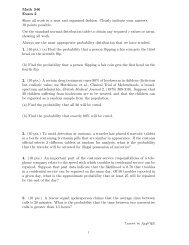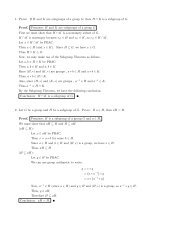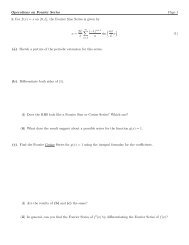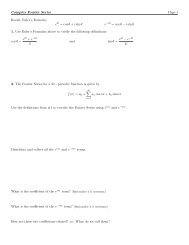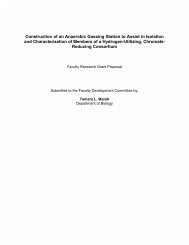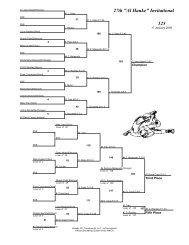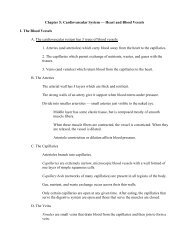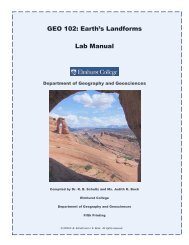Free Executive Summary - Elmhurst College
Free Executive Summary - Elmhurst College
Free Executive Summary - Elmhurst College
Create successful ePaper yourself
Turn your PDF publications into a flip-book with our unique Google optimized e-Paper software.
Learning to Think Spatially: GIS as a Support System in the K-12 Curriculum<br />
http://www.nap.edu/catalog/11019.html<br />
SPATIAL THINKING IN EVERYDAY LIFE, AT WORK, AND IN SCIENCE 89<br />
FIGURE 3.31 Diagram of central places in southern Germany. SOURCE: Baskin, 1957.<br />
3.8.2 The Roots of Walter Christaller’s Work<br />
Three sets of formative influences shaped Christaller’s work: those derived from his childhood,<br />
from his career, and from the intellectual context in which he worked.<br />
One of the formative influences in his childhood was the gift of an atlas from an aunt, a gift<br />
suggested by Christaller’s mother: “My aunt was quite disappointed that she ‘just’ sent a ‘useful’<br />
gift, and not something to play with, which would really make one happy” (Christaller, 1972, p.<br />
601).<br />
Reflecting a view that would be echoed by many geographers, Christaller saw the atlas in a<br />
different light: “The atlas then became a plaything, not only something to look at and study. I drew<br />
in new railroad lines, put a new city somewhere or other, or changed the borders of nations,<br />
straightening them out or delineating them along mountain ranges” (Christaller, 1972, p. 601).<br />
The world is not a given to be captured and frozen, as is, on the map: a world is but one possible<br />
world to be depicted, as we choose to imagine it, on a map. To a geographer, human patterns are<br />
contingent possibilities, not necessities entailed and determined by environmental constraints.<br />
Christaller was visualizing and drawing hypothetical worlds, albeit worlds that had to conform to<br />
some geographical rationale. There is a logic to placing borders along the mountain ranges that<br />
separate groups of people or to dividing human systems on the basis of physical systems, in this<br />
case watersheds. The playfulness of this activity is crucial: the map was the inspiration for possible<br />
worlds.<br />
Another childhood formative influence is what Christaller (1972, pp. 601–602) called<br />
“statistics”:<br />
I designed new administrative divisions and calculated their populations—because I also had a<br />
passion for statistics. When I found a statistical handbook advertised for about two marks, I pleaded<br />
with my father to buy it for me. He, who was only interested in literature, tried to dissuade me.<br />
From disappointment, I broke into tears, and then, nevertheless, was given the statistical handbook.<br />
Copyright © National Academy of Sciences. All rights reserved.



